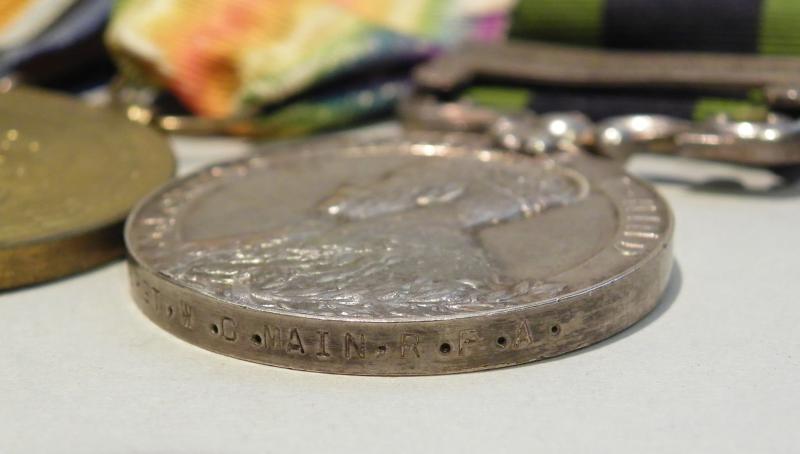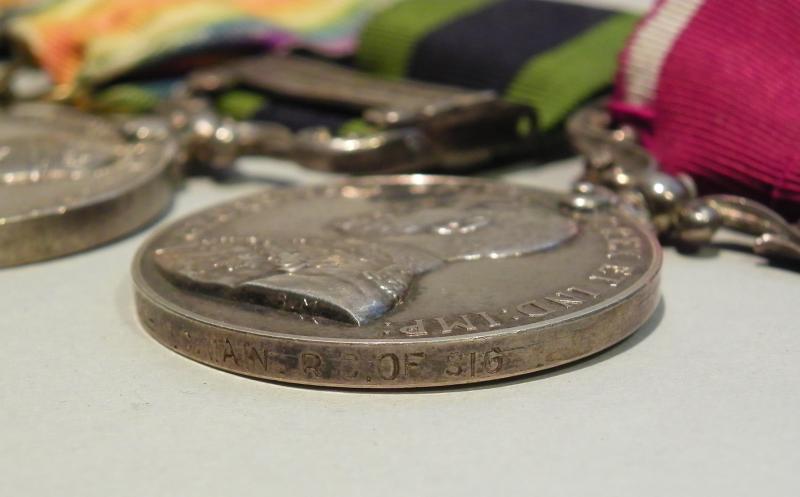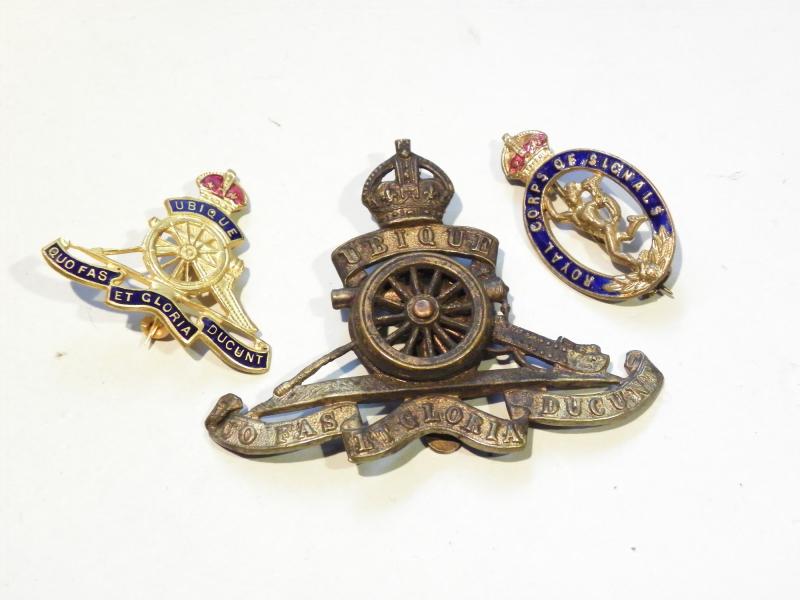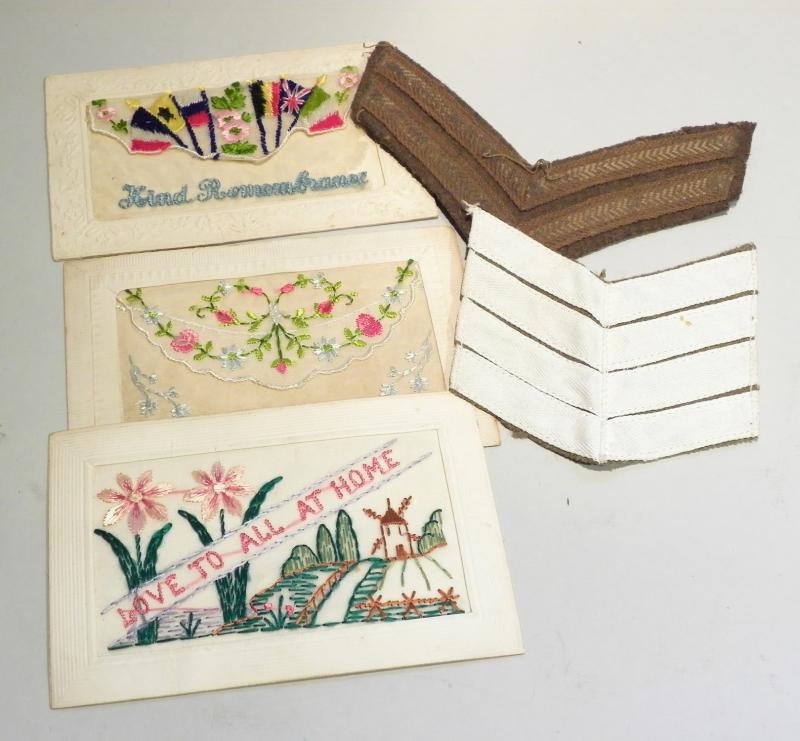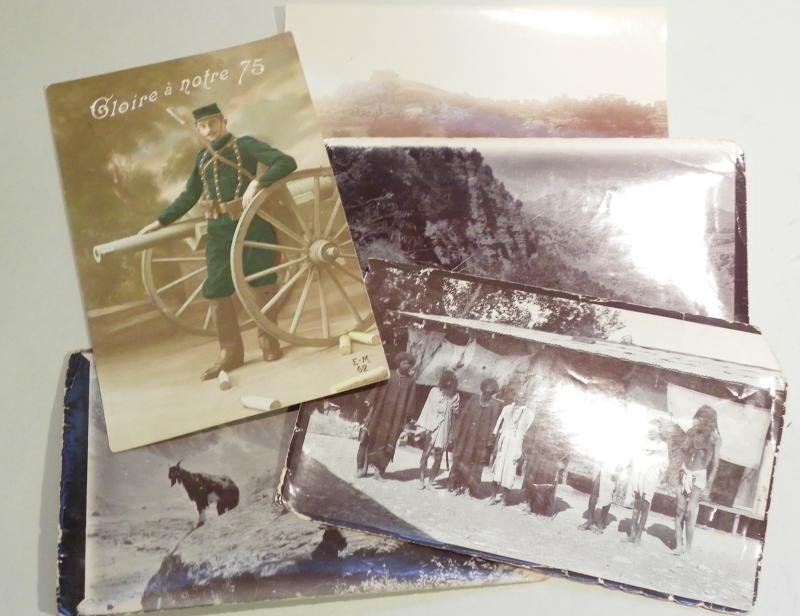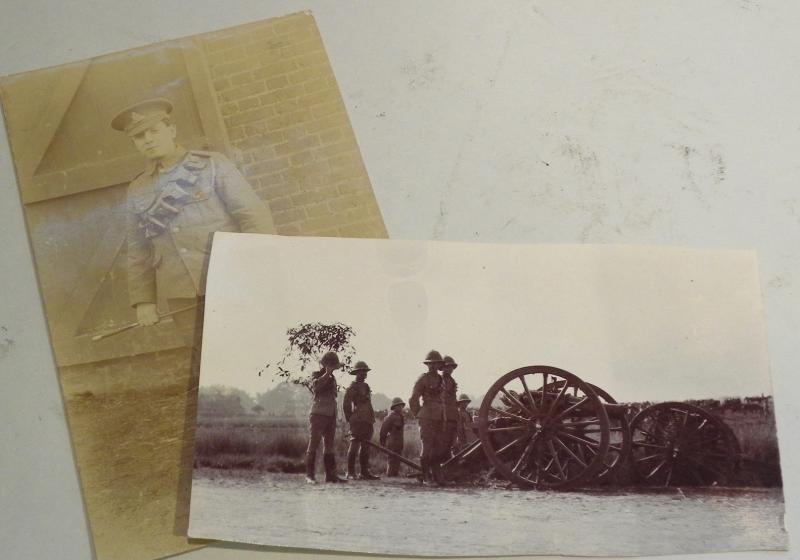A George V Long Service Group 4 to Main RFA & R Co of Signals.
An interesting group of 4 medals comprising of the British war and victory medal correctly named to 59314 Driver William Charles Main Royal Artillery. India General Service medal with Afghanistan NWF 1919 clasp correctly named to 59314 Serjeant William Charles Main Royal Field Artillery. Army Long Service and Good Conduct medal correctly named to 2307233 Corporal William Charles Main Royal Corps of Signals.
William Charles Main was born in Loughborough, Leicestershire in 1885. By the age of 16 he was working as a Tool Setter in Birmingham. He was already serving with the Royal Field Artillery in 1911 with the 81st Battery half of the 5th brigade and part of the 7th (Meerut) Division of the Indian Army, moving to the 3rd (Lahore) Division on 22 November 1914; serving in India before the war. For some reason William didn’t sale with the brigade on the first wave to France in 1914, Despatching from India was delayed by the activities of the German raiders Emden and Konigsberg operating in the Indian Ocean, and by the slow speed of the transport vessels. The first two brigades landed at Marseilles on 26 September 1914, the rest were delayed and split in Egypt, William probably didn’t arrive in France until February / March 1915. Frome here the division next took part in the Battles of Neuve Chapelle, Aubers Ridge, Festubert and Loos in 1915.
They remained in France when the Lahore Division moved to Mesopotamia in December 1915. Between the 20th of March and 13th of July 1916 the brigade came under command of the 3rd Canadian Division and were in action during The Battle of Mount Sorrel and on the Somme. They transferred to 4th Canadian Division in September 1916, seeing action on Vimy Ridge and in the battle of Arras.
In July 1917 5 Brigade RFA became an Army Brigade and served with Second Army in October 1917, Third Army in December 1917, First Army in February 1918, Fifth Army in July 1918 and Fourth Army in October 1918.
William was transferred to the North West Frontier around February 1919 and took part in the Third Anglo-Afghan War, which began on 6th May 1919 when the Emirate of Afghanistan invaded British India and ended with an armistice on 8th August 1919. The Anglo-Afghan Treaty of 1919 resulted in the Afghans gaining control of foreign affairs from Britain and the British recognizing the Durand Line as the border between Afghanistan and British India.
In 1919, the Afghan regular army was not a very formidable force and was only able to muster some 50,000 men. These men were organised into 21 cavalry regiments and 75 infantry battalions, with about 280 modern artillery pieces, organised into 70 batteries, in support. In addition to this, however, in a boost to the army's strength, the Afghan command could call upon the loyalty of up to 80,000 frontier tribesmen and an indeterminate number of deserters from local militia units under British command
In meeting this threat, the British could call on a much larger force. In May 1919, the British and British Indian Army, not including frontier militia, totalled eight divisions, as well as five independent brigades of infantry and three of cavalry. However, of this force, the entire North-West Frontier Province had three infantry divisions and two cavalry brigades, although there was also GHQ India's central reserve of one infantry division and one cavalry brigade. From this, they formed a striking force of two infantry divisions and two cavalry brigades for offensive operations on the Kyber front with the possibility of using it also in the Tochi and Kurram areas.
Artillery was also in short supply, and the three frontier divisions each had a British Field Artillery brigades with two batteries of 18-pounders and one battery of 4.5-inch howitzers, and an Indian mountain brigade with two batteries of 2.75-inch mountain guns. As usual with military operations in places such as Afghanistan, Mesopotamia, Salonika etc, it was disease more than wounds which cause the highest rate of casualties. Approximately 1,000 Afghans killed in action, while the British and Indian forces faced around 1,751 dead or wounded, with hundreds of others dying of disease not included in the figures.
The treaty of Rawalpindi was concluded on 8th August 1919 with Afghanistan becoming independent.
William was discharged from the RFA on 18th October 1919 at the rank of Serjeant and re-entered the army into the Royal Engineers 2nd Divisional Signals Coy and in June 1920 the regiment officially became the Royal Corps of Signals. Due to William’s service experience, he was made corporal and later Lance Serjeant.
Frome here he gets lost, he was still serving in 1921 but due to his name ‘Main’ there may be a lot of information with an incorrect spelling. On his medal index card, is written ‘(Staff) Poor Law Institution in Chesterfield Derbyshire’ as a place to send his medals in September 1924. It seems these buildings were in use by the Lancashire regiment until around 1930, when the premises was converted to a Children’s home.
There is a William Charles Mayne with the same date of birth serving with a Royal Artillery Anti – Aircraft training battery as a 2nd Lieutenant from 1941, but this is conjecture.
His medals are in very good original condition and come mounted as worn, original ribbons now a little tatty. They come with photographs, silk postcards, badges and insignia and some copied paperwork including Medal index card, medal roll 1891, 1911 census and absent voters list.
Code: 29798
265.00 GBP



